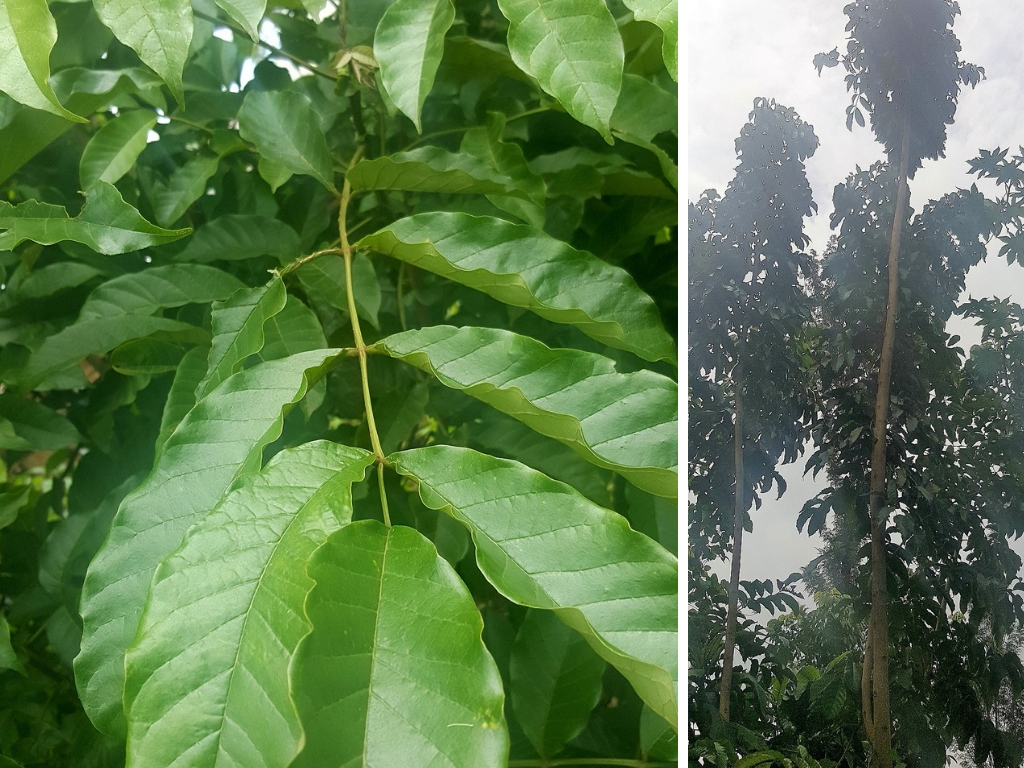In the delight of a blog, Dimples, the author in narrating the lives and times of Bukusu forefathers, writes: “Enywee Bamasaaba, nabawa chimbabasi. Kene mumenye mumakunda kano mindali ne mindali. Mbao omusiku olibarusiamo ta! Mukhabe nge kumusola. Mukhakhebe babana mubulala.” (You Bamasaaba, I bless you. You will live in the land forever. In peace You will flourish like Kumusola tree).
subscribe
As this article will reveal, these words uttered by Maina Wa Nalukale are a monstrous blessing to the Luhya community. Perhaps, it can be argued, Maina Wa Nalukale’s blessing set in motion events that made up the numbers that make luhya votes such an attractive preposition in modern day Kenyan politics. But more importantly, is the cultural significance of the kumusola/ uluwovu/ olusiola to the people of mulembe, especially when it came to marital affairs and divorce.
Quick facts on kumusola / uluwovu / olusiola tree
| Scientific and Common Names | Scientific Name: Markhamia lutea. Common Name: Nile Tulip Tree |
| Name in Luhya language/ dialects | Kumusola (Bukusu); Uluwovu (Maragoli); Olusiola (Other luhya dialects) |
| Identifiable Features | Evergreen tree. Grows almost always in groups as its seeds stubbornly propagate, thriving even within the shade of the parent tree. |
Kumusola/ olusiola/ uluwovu tree and divorce
Not so long ago, in a village somewhere in today’s Maragoli, a child went to be with the ancestors. This child’s father had lived in the village alone, as the poor man was long estranged with his wife. However, in-spite of the situation, his estranged wife, as any mother, rightfully wanted to send-off her child.
But she had been away from her matrimony for far too long. The dead child was in her mid twenties, it had been that long.
Given the situation, this mother, Muhonja (let’s call her that) expected the welcome to be unsavory. But she still made her way to the mourning, anxious village.
Muhonja was A feisty woman, not one to back down easily. But on that day, Muhonja’s machinations couldn’t arm-twist the Bagonda clan of Maragoli. Her dead child’s people had no issues with Muhonja mourning and bury her child. However, what they couldn’t allow Muhonja was access into her matrimonial home. This was because she had been absent during a critical phase of the construction of her matrimonial home – kuvika ikisegese.
Back in the day, in spite of emissaries and all manner of appeasement, Muhonja had failed to honor her then husband’s request to be present during the construction of their matrimonial home. Muhonja’s gravest mistake had been not being present when her husband affixed the ‘kofia‘ (the roof ridge) on their matrimonial home.
As per Maragoli building and construction customs, a woman who fails to be part of this cardinal cultural rite is considered to have divorced her husband. It is such moments when the kumusola tree comes in handy for the estranged husband.
Kumusola and divorce
As Muhonja’s case reveals, divorce did occur in traditional Luhya societies. Though rare, the Luhya prescribed divorce to be complete in certain special instances. Believe you me a woman simply deserting her home, especially after key marriage rituals had already taken place, was not considered by the Luhya to be grounds for divorce.
Thus, a woman who’d partaken in all the Luhya marriage customs such as (kuweka kofia) could leave her matrimonial home in her youth to wherever. Such a woman, as Muhonja, could come back in her old age and no one would question her being there. This is because a matrimonial house belonged to the woman, even if her husband was long-buried.
Such propensity for robust family ties is why the kumusola/uluwovu/olusiola tree is of immense cultural significance, particularly among the Maragoli, as regards matrimony. What follows tells how the Maragoli used the kumusola tree to pronounce divorce.
Estranged husbands could use the twigs of kumusola/uluwovu/olusiola tree to bar the entrance of their matrimonial home. Here the twigs served the purpose akin to decree absolute in modern divorce proceedings. The Maragoli believed that a wife who defied the symbolism of this act by removing the twigs faced certain death.
Read: (other) use of olusiola tree, Markhamia Lutea, in Luhya culture – from shrines to a brotherly warning

